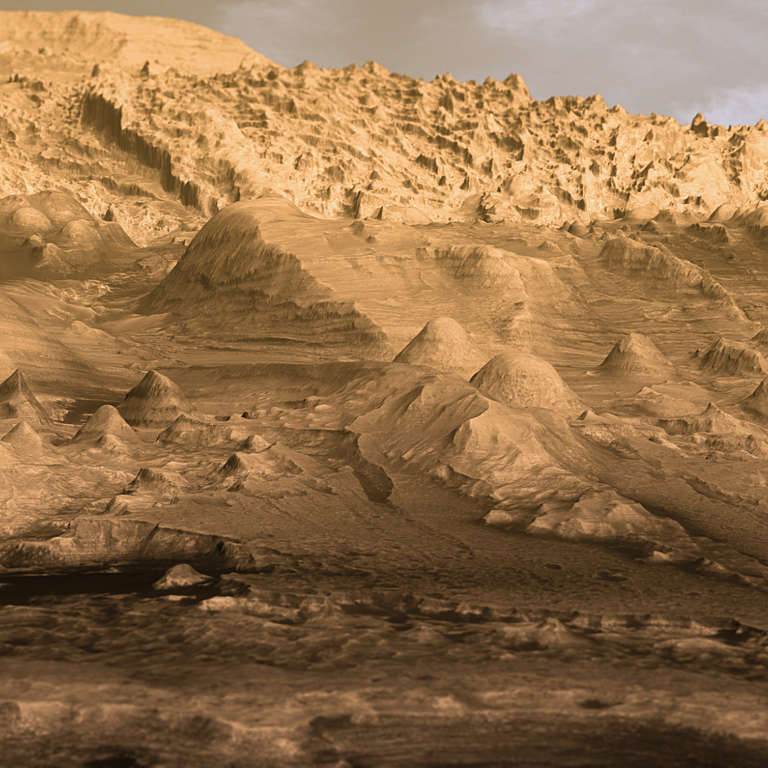All
All
Stories, updates, insights, and original analysis from The Planetary Society.
Hayabusa2 arrived at Ryugu, so I can make comparisons of asteroid scales!
On 26 June 2018, Hayabusa2 arrived at its target asteroid, Ryugu. In a very brief status update, I present comparisons of Ryugu to other previously visited asteroids and comets.
Mars' growth stunted!
Mars is a weirdo. (Well, as far as planets go).
#LPSC2018: What the Moon's craters tell us about Earth's past climate
You might be surprised to learn that studying craters on the Moon can tell us about ancient Earth.
Geology on Mars: Using stratigraphic columns to tell the story of Gale Crater
Stratigraphic columns are a basic tool in geology, used on both Earth and Mars to tell the story of a location. But what are they really?
Unraveling a Martian enigma: The hidden rivers of Arabia Terra
Arabia Terra has always been a bit of a martian enigma. Planetary scientist Joel Davis takes us on a tour of its valley networks and their significance in telling the story of water on Mars.
Gullies on Mars: Wet or Dry (Ice)?
Martian gullies were in the spotlight last week thanks to a NASA press release stating they were
Whither the Weather? A Jet Stream Explainer
Jet streams are found in planetary atmospheres throughout our solar system. But what exactly are they?
The what-o-sphere? An explainer
Why do we need to slice up atmospheres into classifications like the troposphere, stratosphere, mesosphere, and thermosphere?
Atmospheric Waves Awareness: An Explainer
There are two types of atmospheric waves that are critically important on Earth and other planets: gravity waves and planetary waves.
Clouds and haze and dust, oh my!
What types of aerosols do we find in the atmospheres around the Solar System, and why does what we call them—clouds vs. haze vs. dust—matter? Sarah Hörst explains.
A Roundup of Dust Devil Research
Planetary scientist Ralph Lorenz briefs us on the current state of our knowledge on dust devils on Earth and Mars.
The round worlds in the solar system: An updated graphic
I have a newly updated scale comparison graphic to share: all the round worlds in the solar system smaller than 10,000 kilometers in diameter, now with added Pluto, Charon, and Ceres.
Preparing for the Journey to the Moon, Mars and Beyond
Deepak Dhingra reports on a planetary analog field trip exploring a very young volcanic terrain in Idaho at Craters of the Moon National Monument and Preserve.
The solar system at 1 kilometer per pixel: Can you identify these worlds? The answers
Last Friday I posted an image containing 18 samples of terrain, all shown at the same scale. Were you able to figure out which square was which? Here are the answers.
The solar system at 1 kilometer per pixel: Can you identify these worlds?
A look at the surfaces of 18 worlds in our solar system, all at the same scale.
LPSC 2015: Aeolian Processes on Mars and Titan
Planetary scientist Nathan Bridges reports on results from the Lunar and Planetary Science Conference about the action of wind on the surfaces of Mars and Titan.
45th Binghamton Geomorphology Symposium Report
The 45th Binghamton Geomorphology Symposium, usually focused on terrestrial studies, shifted this year to planetary science. Ted Stryk gives us an overview.
New Rosetta view of the comet - and a comparison to other comets
Rosetta's view of the comet is getting better and better. Today they released a new image from the high-resolution OSIRIS camera, and it's a very fresh one, taken only two days ago. Distinct features are coming into view. And it's finally detailed enough for me to compare it to the five other comets we've visited in the past.
The Ancient Snows of Mars on Planetary Radio
Kat Scanlon tells Planetary Radio that Hawaii and Mars have more in common than you might think.
Terra Cognita
Pushing back the frontier, and filling in the blank spaces on the map.


 Explore Worlds
Explore Worlds Find Life
Find Life Defend Earth
Defend Earth


 Sun
Sun Mercury
Mercury Venus
Venus Earth
Earth Mars
Mars Jupiter
Jupiter Saturn
Saturn Uranus
Uranus Neptune
Neptune Small Bodies
Small Bodies


















